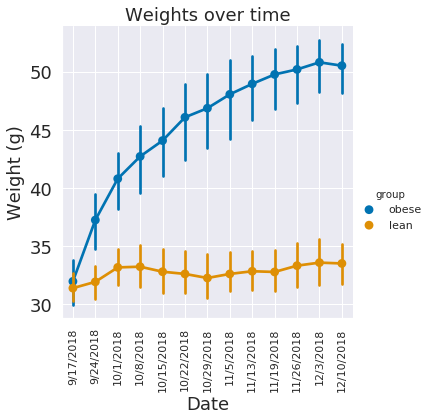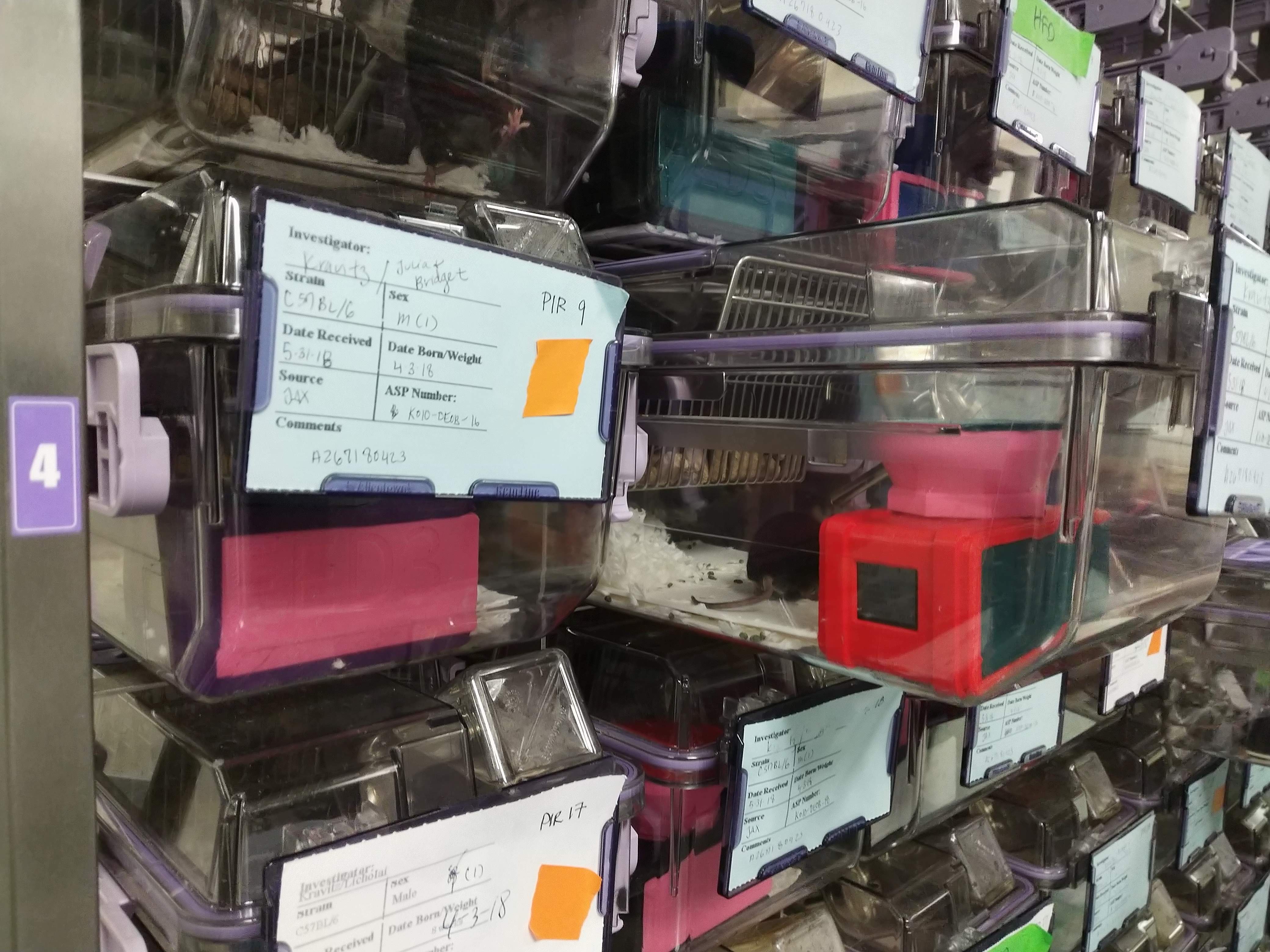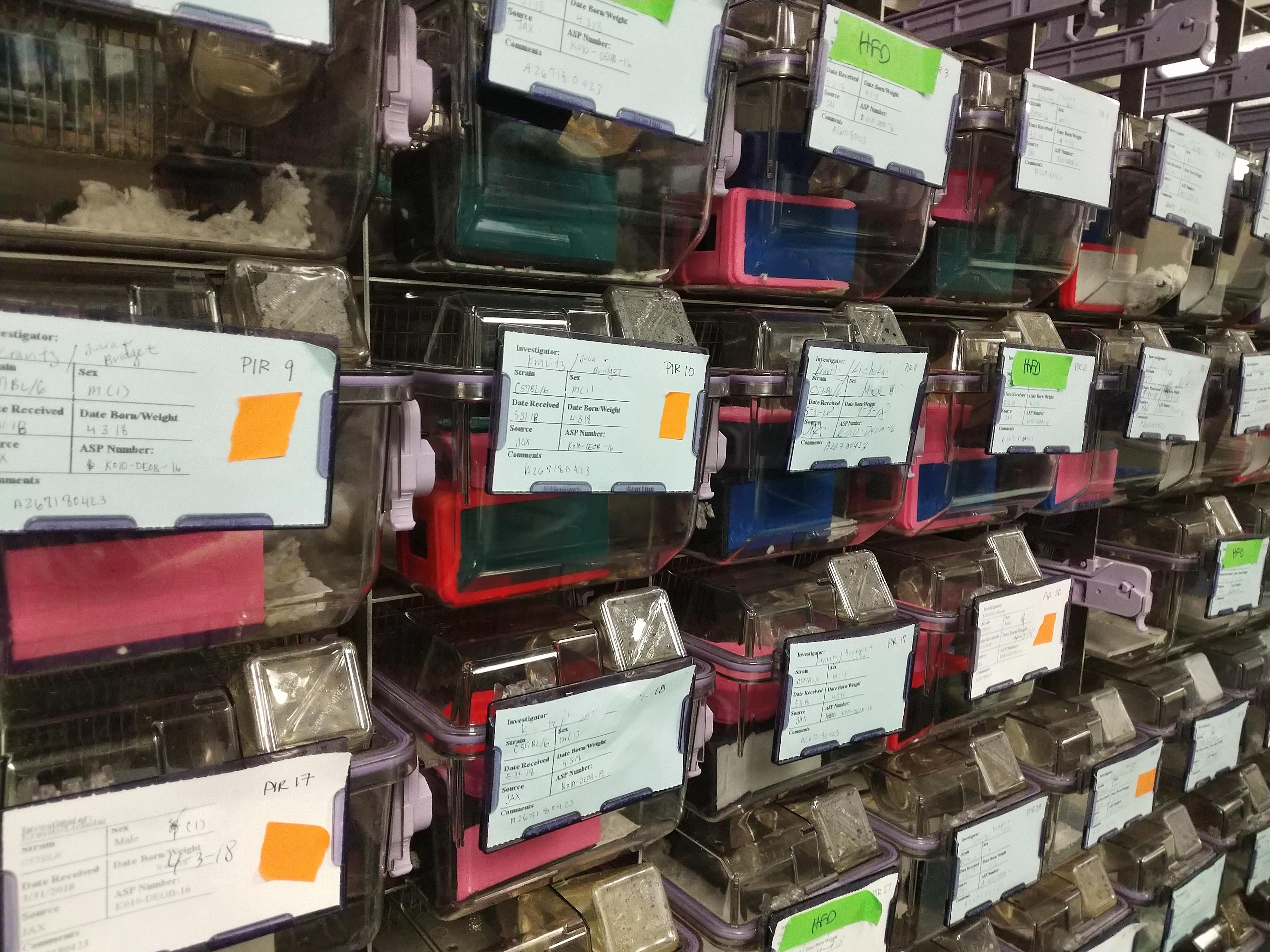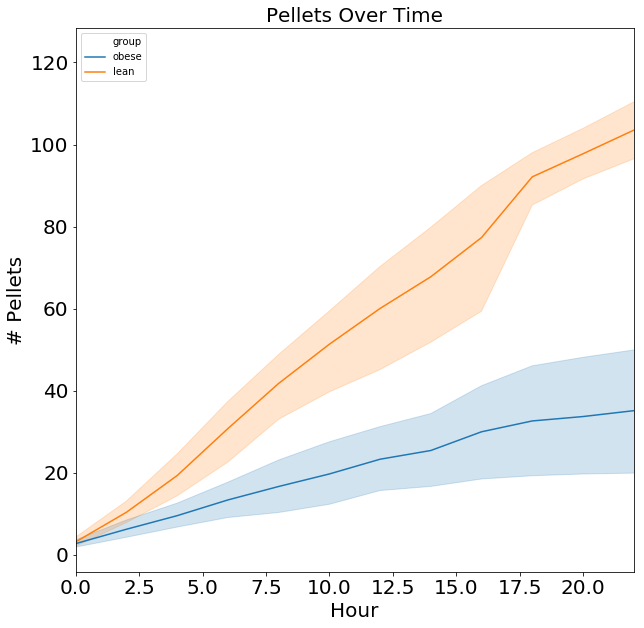Our lab is interested in how exposure to obesogenic diets might influence the willingness to work for palatable food, or to learn how to acquire such rewards. One way to test aspects of this is to perform an experiment in which a mouse learns to associate a specific task with the delivery of a reward. Since the amount of the reward and the work it takes the mouse to earn it are static in this experiment, it is called a "fixed ratio", or FR. We can then look at how quickly mice who are obese formed these associations compared to lean mice. Here are the weight curves showing how the "obese" group quickly gained weight on a high fat diet.

To test whether the obese and lean mice learned to acquire rewards (in this case a sugar pellet) differently, we used FED3 to launch a large-scale FR experiment between lean and obese mice. As you can see, the FED3 easily sits inside the home cages which are then housed in a rack in the vivarium.


(If you look closely you can see some of the cages with green tape on them labelled, "HFD," for high fat diet.)
We let the FED3s (running the Fixed Ratio program) run overnight, since that is when mice are most active. The next day, we pulled that data from the SD cards in each device, and used python to organize and plot our data.

As you can see, the lean mice learned to acquire more sugar pellets than the obese mice. This kind of straightforward experiment would have been very time consuming without FED3, which let us collect this data overnight!
Discussions
Become a Hackaday.io Member
Create an account to leave a comment. Already have an account? Log In.